David's Astronomy Pages
|
Notes (S355) |
Notes (Main) |
Home Page |
Notes (S357) |
|
Main objective of the session was to test new LX200R telescope and ST-10XME/CFW10 under night sky conditions.
Note : Images from this first light session were taken at approximately full moon, before any balance and collimation adjustments and without periodic error correction or quantitative focusing. Reduction was with a dithered master night flat. Later tests showed that polar alignment was fairly good. but that scope balance was extremely compromised by the heavy CCD/Filter Wheel equipment.
Stars are somewhat bloated due to some mis-collimation and elongated/trailed due to Periodic Error and poor scope balancing.
Official 'First Light' image (Comet Lulin) is
shown below.
A full set of best images from the night are on the Session's
Images Page (2009-03-09)
|
12" LX200R First Light Image |
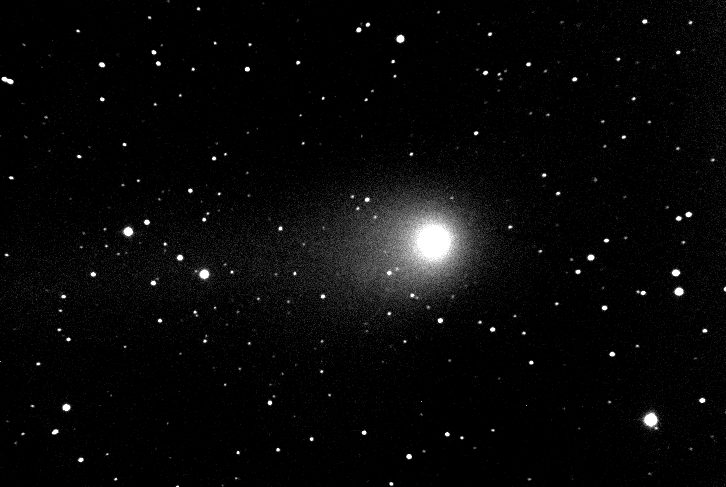
|
|
CCD Image (Linear Scale), 30s sec exposure, 3x3 binning, C Filter 2009-03-09 21:08 h UT (#356006) 12" LX200R (at f/5.8) + ST-10XME |
|
Imaging Equipment used for 'First Light' Session (The Meade Microfocuser is just temporary and will swapped out for my Optec TCF-S focuser for future sessions) |
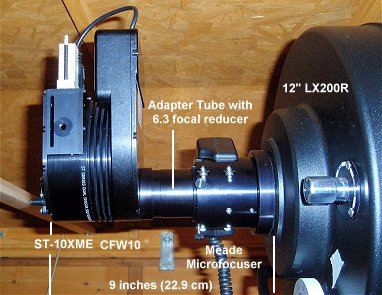
|
Back to Top
A comparison of selected images from first light session with previous images taken with old scope/camera is shown below. The images are not meant to be used as a full and direct comparison of the abilities of the two setups, but were used to check the performance of the new scope and help resolve remaining tuning issues.
| 12" LX200 R +
ST-10XME (Below / (Left) |
8" LX200 Classic +
ST-7E (Below / Right) |
|
| M1 - Supernovae remnant | ||
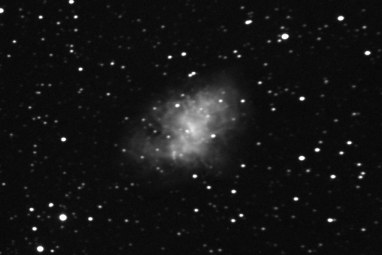 |
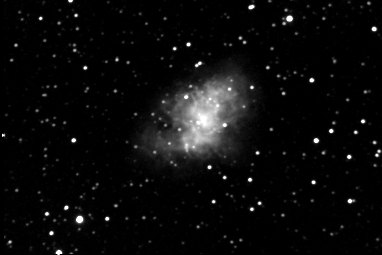 |
|
|
CCD Image (linear scale, 60% size, cropped) 5 x 60s exposure (average combine), 3x3 binning, C Filter 2009-03-09 21:48 h UT (#356039-50) 12" LX200R (at f/5.8) + ST-10XME |
CCD Image (linear scale) 6 x 180s exposure (average combine), 2x2 binning, C Filter 2007-09-11 01:05 hUT (#211121-26) 8" LX200 Classic (at f/6.6) + ST-7E |
|
| Equivalent image but obtained
with shorter exposure New image let down by poor collimination/ non-sharp stars |
||
| M13 (Hercules) - Globular Cluster | ||
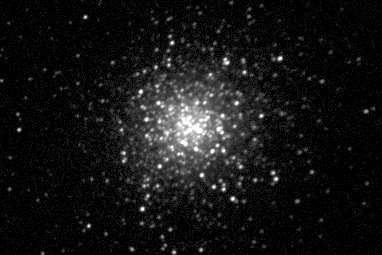 |
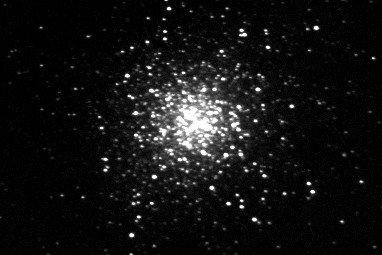
|
|
|
CCD Image (square root scaling) 10s, 2x2 binning, R Filter 2009-03-10 00:20 h UT (#356196) 12" LX200R (at f/5.8) + ST-10XME |
CCD Image (linear scaling 120s Clear Filter 2005-06-06 23:26 h UT (#88020) 8" LX200 classic (at x.x) + ST-7E |
|
| Equivalent image but obtained with shorter exposure | ||
| M101 (Ursa Major) | ||
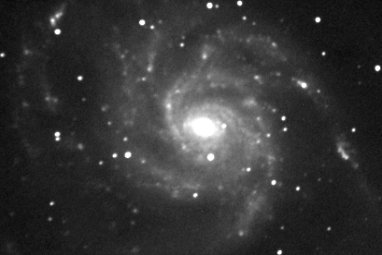 |
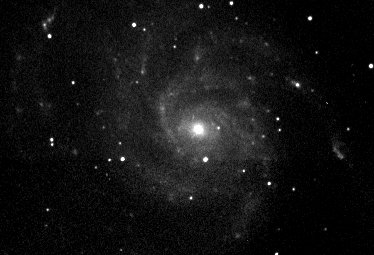 |
|
|
CCD Image Mosaic (cropped) 3 x 3 min (average combine), 3x3 binning, C Filter 2009-03-10 00:54 h UT (#356245-49) 12" LX200R (at f/5.8) + ST-10XME |
Part of CCD Image Mosaic (1x2) 3 x 2 min (average combine), C Filter 2004-12-11 07:04 h UT (#79063-68) 8" LX200 classic (at f/10.3 ?) + ST-7E |
|
| Significantly improved image (strongly helped by larger telescope aperture and much higher sensitivity of new camera) |
||
| M81 (Ursa Major) | ||
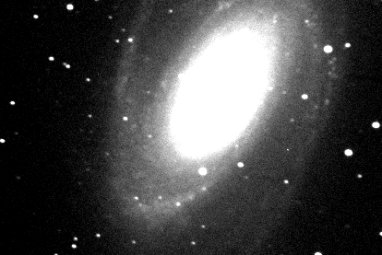 |
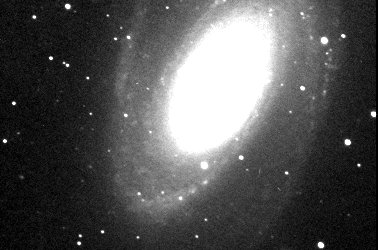 |
|
| CCD Image (linear scale, 92% size) 90 sec exposure (single frame), 3x3 binning, C Filter 2009-03-10 01:29 h UT (#356259) 12" LX200R (at f/5.8) + ST-10XME |
CCD Image (linear scale) 7 x 2 min exposure (average combine), 2x2 binning, C Filter 2006-05-04 01:07 h UT (#121176-82) 8" LX200 classic (at x.x) + ST-7E |
|
| Broadly equivalent image (new image acquired with much shorter exposure, but let down by non-sharp stars/poor collimination) |
||
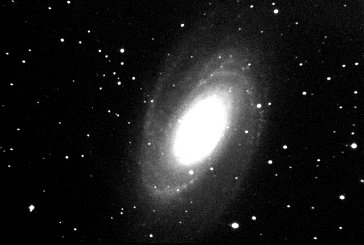 |
N/A | |
| CCD Image (linear scale,
50% size) Image details as above 12" LX200R (at f/5.8) + ST-10XME |
Not possible to
acquire as a single frame with old equipment due to smaller field of view and due to camera abutting the base of fork mount. |
|
| M82 (Ursa Major) - Spiral Galaxy | ||
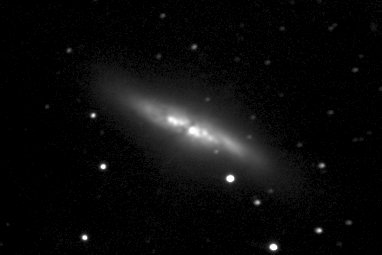 |
N/A | |
| CCD Image (linear scale,
50% size) 90 sec exposure (single frame), 3x3 binning, C Filter 2009-03-10 01:29 h UT (#356259) 12" LX200R (at f/5.8) + ST-10XME |
Not possible to
acquire with old equipment as base of fork mount prevents camera reaching declination of M82 |
|
| NGC 2392 (Gemini) - Planetary Nebula | ||
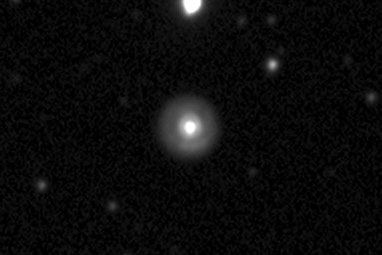 |
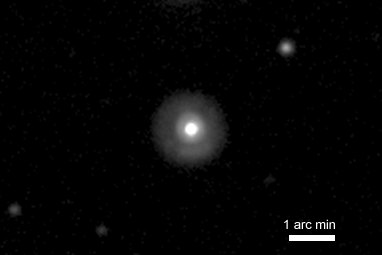 |
|
| CCD Image (square root
scaling, 200% size, cropped) 3 x 10 sec (average combine), 2x2 binning (half-frame), C Filter 2009-03-09 22:22 h UT (#356101-03) 12" LX200R (at f/5.8) + ST-10XME |
CCD Image (square root
scaling, 200% size) 7 x 45 sec (medium combine), 1x1 binning, C Filter 2007-12-14 21:59hUT (#241186-92) 8" LX200 classic (at x.x) + ST-7E |
|
| Broadly equivalent image (new image acquired with much shorter exposure, but let down by non-sharp stars/poor collimination) |
||
| M97 (Ursa Major) - Planetary Nebula | ||
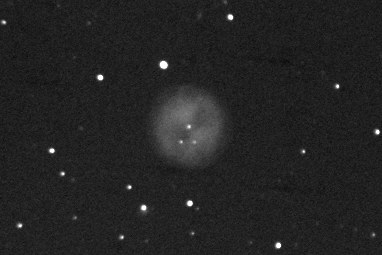 |
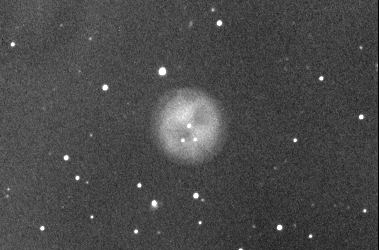 |
|
| CCD Image (linear scale,
cropped) 3 x 60 sec exposure (average frame), 3x3 binning, C Filter 2009-03-09 22:59 h UT (#356129-31) 12" LX200R (at f/5.8) + ST-10XME |
CCD Image 8 x 180s exposure (average combine), 2x2 binning, C Filter 2006-12-17 00:31 hUT (#164397-404) 8" LX200 classic (at x.x) + ST-7E |
|
| Broadly equivalent image (new image acquired with much shorter exposure) |
||
| M57 (Lyra) - Planetary Nebula | ||
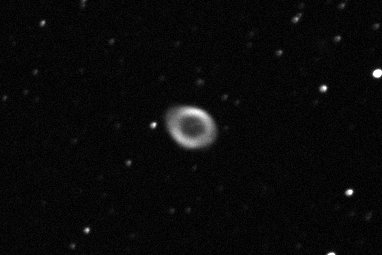 |
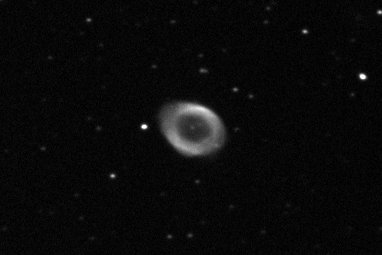 |
|
| CCD Image (linear scale,
cropped) 15s sec exposure (single frame), 2x2 binning, C Filter 2009-03-10 01:47h UT (#356277) 12" LX200R (at f/5.8) + ST-10XME |
CCD Image (linear scale,
cropped) 3 x 60s exposure (average combine), 1x1 binning, C Filter 2008-10-13 19:14 hUT (#315009-11) 8" LX200 classic (at x.x) + ST-7E |
|
| Broadly equivalent image (new image let down by poor focussing/sharpness old image helped by stacking) |
||
| NGC 2362 / Caldwell 64 (Canis Major) - Open Cluster | ||
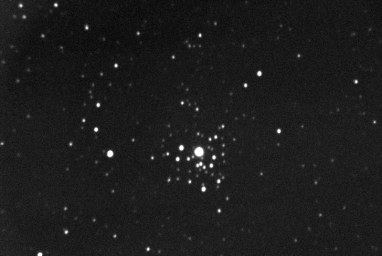 |
N/A
|
|
| CCD Image (52% size) -
Altitude 7d 10m 5 sec exposure (single frame), 3x3 binning, C Filter 2009-03-12 20:49 h UT (#357008) 12" LX200R (at f/5.8) + ST-10XME |
At Declination
of -24d 57m it was not possible to
acquire this Caldwell object using previous (shorter) equipment & sliding roof as the target lay several degrees below the observatory wall |
|
|
^ 12" LX200 R + ST-10XME (Above / Left) |
^ 8" LX200 Classic + ST-7E (Above /Right) |
|
|
Star Blooming - ST-10XME |
||
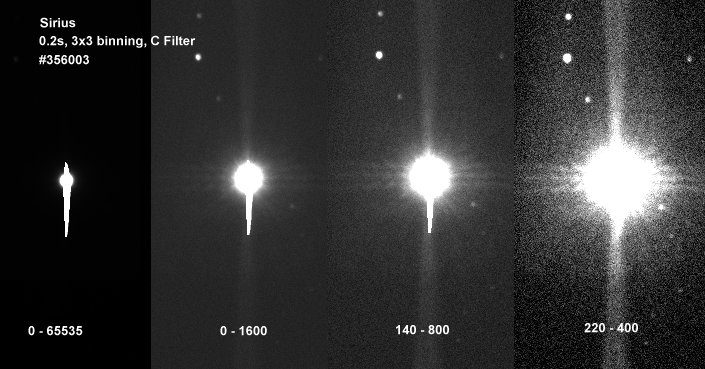
|
||
|
CCD Image (Montage (different black/white range),
Note : North down. 0.2s sec exposure, 3x3 binning, C Filter 2009-03-09 21:03 h UT (#356003) 12" LX200R (at f/5.8) + ST-10XME |
||
|
Sirius with Bloom |
Sirius corrected for Bloom |
|
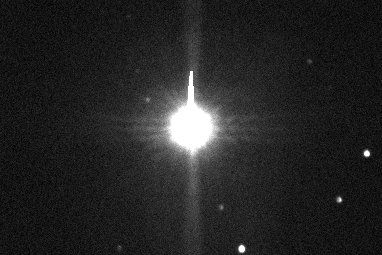
|
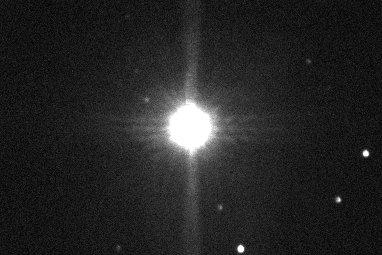
|
|
|
CCD Image (Linear Scale, cropped), 0.2s sec exposure, 3x3 binning, C Filter 2009-03-09 21:03 h UT (#356003) 12" LX200R (at f/5.8) + ST-10XME |
||
Back to Top
|
M13 taken through different Filters
using CFW10 Filter Wheel |
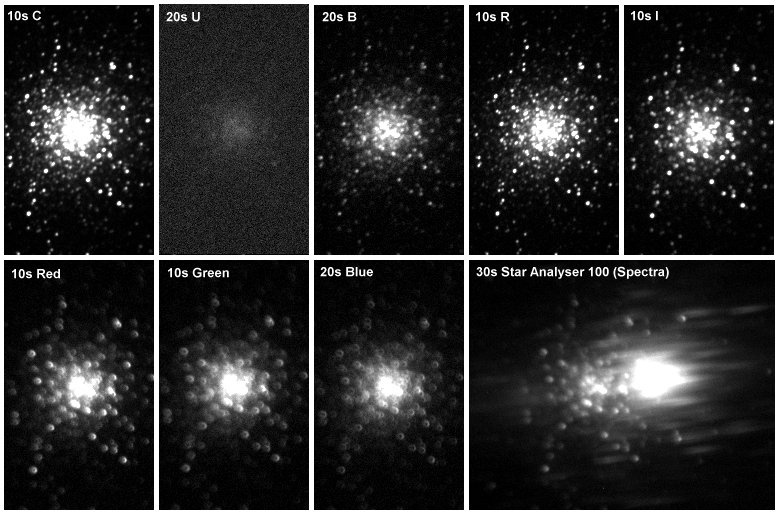
|
|
(Images are all taken using the same Focus Position) CCD Image Montage 10-30s exposures (single frames), 3x3 binning, Various Filters 2009-03-09 (#356188-237) 12" LX200R (at f/5.8) + ST-10XME |
Back to Top
|
Non-focused image of M13 showing
effects of miscollimation |
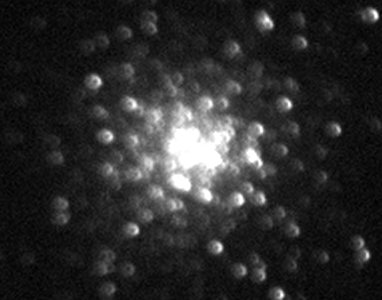
|
|
Unfocused CCD Image (200% size enlargement) 10s exposures (single frames), 3x3 binning, R Filter 2009-03-09 (#356191) 12" LX200R (at f/5.8) + ST-10XME |
|
FWHM analysis of 30 focused images
of Comet
C/2007 N3 (Lulin) showing effects of miscollimation |
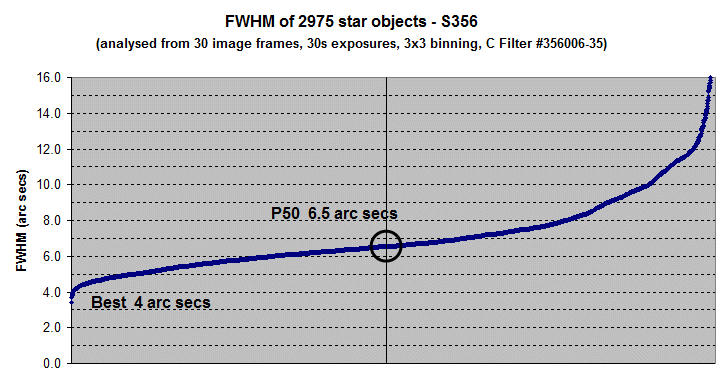
|
|
Example image containing stars analysed for FWHM - Altitude 52 deg. (Note : The FWHM for comet was not included within the statistics) |

|
|
CCD Image (Linear Scale), 30s sec exposure, 3x3 binning, C Filter 2009-03-09 21:08 h UT (#356006) 12" LX200R (at f/5.8) + ST-10XME |
Back to Top
Examination of several sets of images with time sequences of 5-20 minutes showed there to a consistent drifting of stars in RA . It was considered that this might be a issues with mount's polar alignment but images in southern and western skies did not show significant declination drift. Source of problem is not yet identified but it thought to be due to either due to a telescope balance problem (no balance weights used during first light session) or a tracking issue.
More detailed analysis was carried out on the sequence of 30 x 30sec exposures of Comet C/2007 N3 (Lulin) which covered a 16 minutes interval. Images were centered on a sky position at Declination +19d 50m and almost due south. During this time stars drifted Westwards by around 30 arc secs (at rate of 1.9 arc sec/min), whilst drifting northwards by around 3.5 arc sec (at rate of 0.22 arc secs/min). Camera was rotated 4 deg from N/S position. The images were recorded without any PEC training/corrections. Stacking frames without any alignment revealed the overall drift of the stars (see image below). Drift in RA is not constant but oscillates over 8 min cycles during to Periodic Error, as shown by the bright ('stationary drift') points along the star and comet trails (and even better seen by Blink Comparison/Animation).
The positional information from a single bright star from the 30 frames was measured and after removing the RA drift showed that the residual periodic error of the new scope is between 18 - 22 arc secs (at Declination +19d 50h)
|
Star drift and periodic error
effects during 16 minute interval |
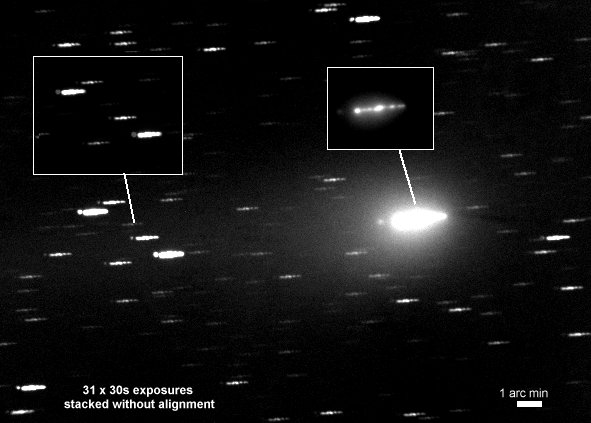
|
|
Annotated CCD Image 30 x 30s sec exposure (average combined / no alignment on stars or comet) 3x3 binning, C Filter, Cropped 2009-03-09 21:08 - 21:24h UT (#356006-35) 12" LX200R (at f/5.8) + ST-10XME |
|
Star Drift |
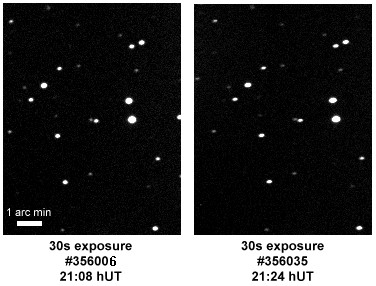
|
|
Periodic Error Periodic Error on a star taken from above sequence of 30 x 30 sec exposures |
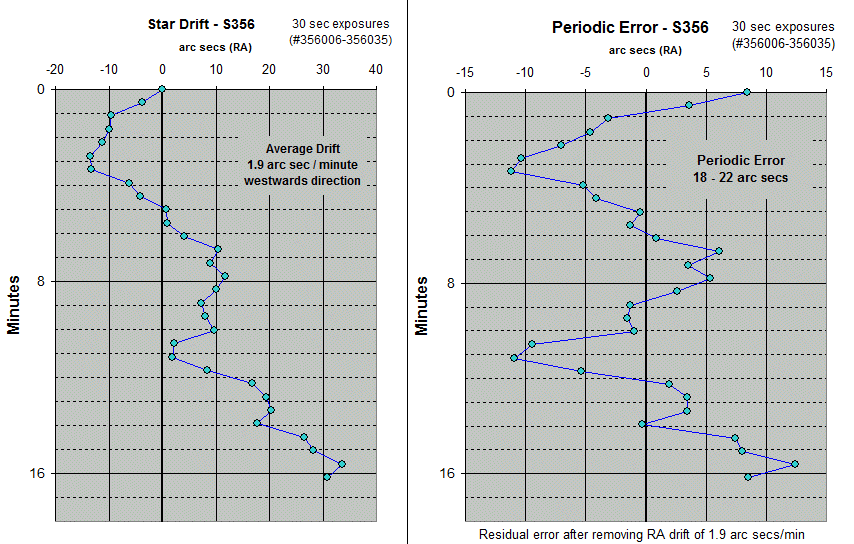
|
| 2009-03-09 21:08 - 21:24 h UT (#356006-35) |
Back to Top
In early 2009 I purchased a Ted Agos Universal Adapter Tube
fitted with an Antares focal reducer. This is become a main part of my
new imaging setup from 2009 onwards. During the 'first light' session the
Adapter Tube was used with the Standard Meade Microfocuser (rather than my own
Optec TCF-S focuser).
It was found that the Adapter tube (2" OD) could not be fully inserted into
the Microfocuser, but held up around 4.5 cm before its expected full insertion
point. Investigation alter showed that this was due to the Standard Visual Back
on the scope having a clear aperture of only 1-5/8". Whilst there are
'Eye-Openers' on the market which can replace the standard visual back and would
presumably allow the Adapter Tube to be fully inserted into the Meade
Microfocuser, in my case the Adapter Tube is destined to be used with
Optec TCF-S focuser which has its own Visual Back mount with 2.1/8" clear
aperture. (see notes from
next session with results with Optec TCF-S, 2009-03-15)
|
Imaging Equipment used for
'First Light' Session |
||
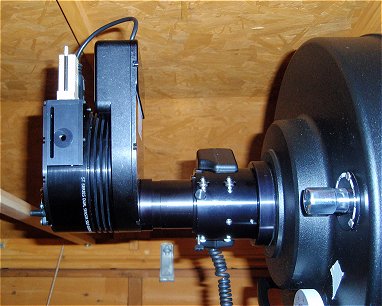
|

|
|
|
Ted Agos Adapter Tube fitted with Antares 6.3 focal reducer |
||
|
|
|
|
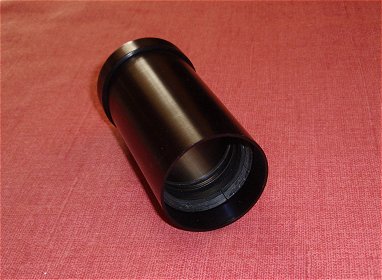
|
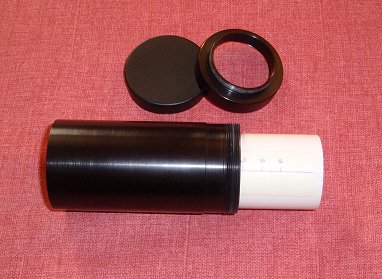
|
|
Back to Top
| This Web Page: | Notes - Session 356 (2009-03-09) |
| Last Updated : | 2015-05-16 |
| Site Owner : | David Richards |
| Home Page : | David's Astronomy Web Site |